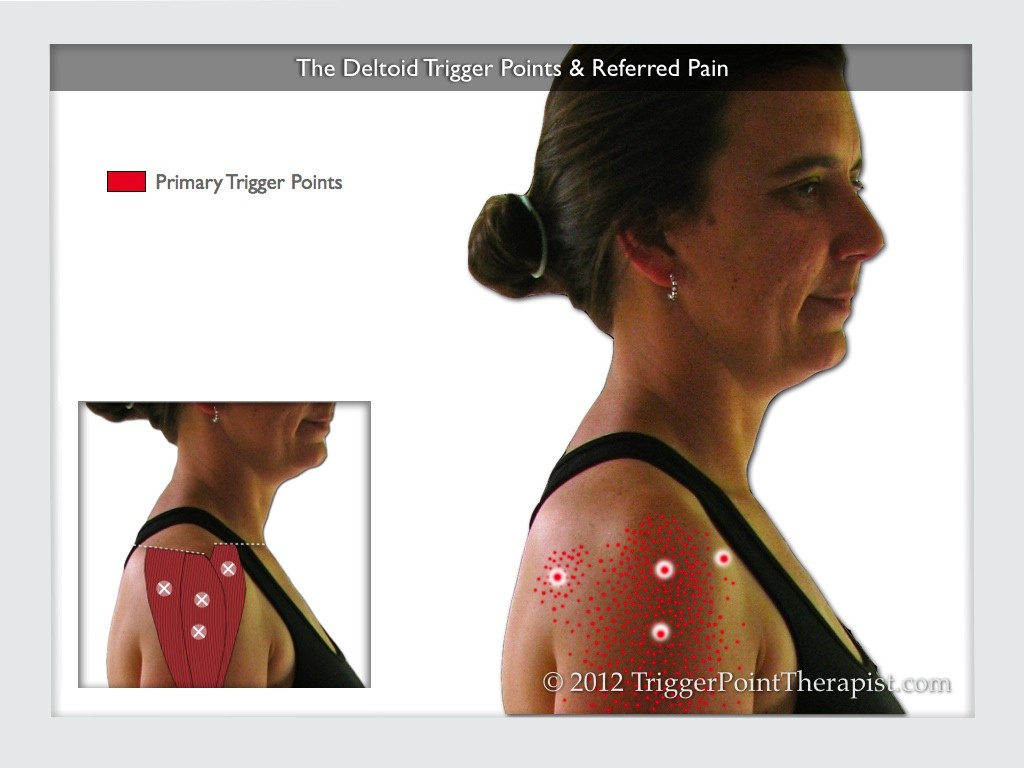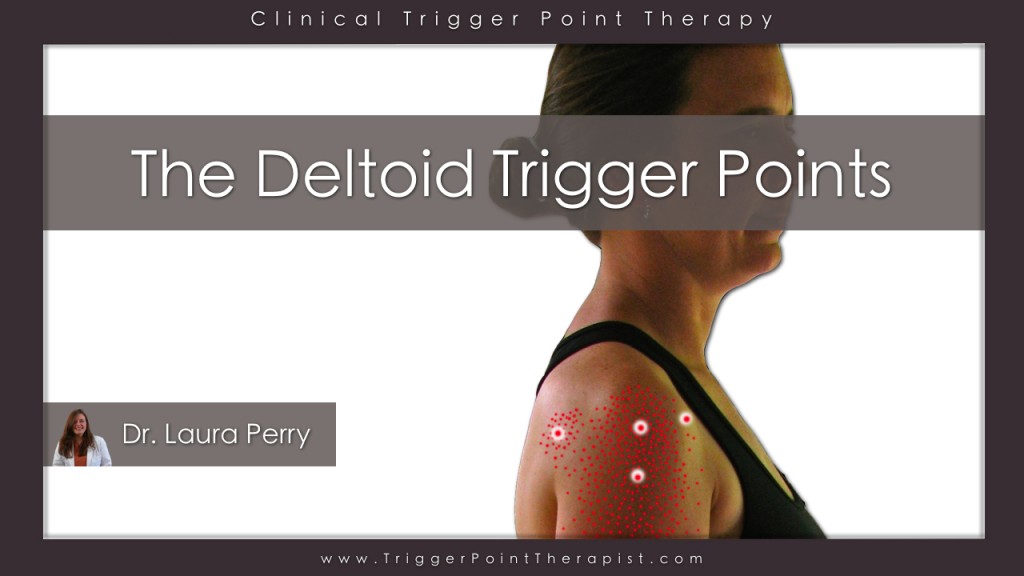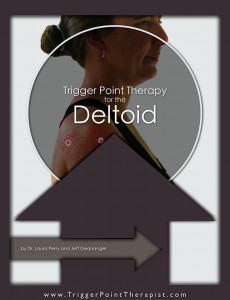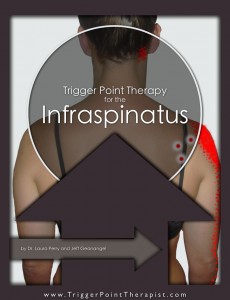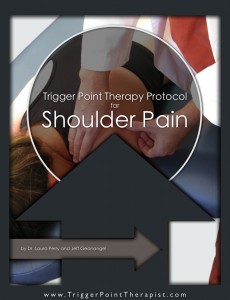It doesn’t happen often in the field of myofascial pain, but the deltoid muscle group is not going to fool anyone with the referred pain from its trigger points. What might fool you is the fact that deltoid trigger points are rarely the sole cause of shoulder pain, despite their prominent location.
The Deltoid Muscle
For a complete review of its anatomical and functional aspects please see the wikipedia entry for the deltoid muscle. Listed below are some of the key points that are important to the practice of trigger point therapy.
- Anatomical Factors: It is important to clinically access this muscle as three separate muscles (or heads): the anterior deltoid, the lateral (or middle) deltoid, and the posterior deltoid. In acute pain conditions of the shoulder, trigger points can occur in any one of the deltoid sections independently of the other sections. In chronic pain conditions it is common to see simultaneous trigger point activity in two or three of the deltoid heads.
- Biomechanical Factors: All three sections of this muscle contract during heavy loading of the arm to prevent dislocation of the humeral head from the shoulder joint.
Deltoid Trigger Points and Referred Pain
The lateral (or middle) head of the deltoid can contain up to five trigger points, but the two trigger points in the central fibers are the most common. The anterior and posterior deltoid heads can harbor one trigger point each, and they are also found in the central fibers of each head.
The referred pain from the deltoid trigger points is rather unique among myofascial pain patterns in that it “stays close to home” and is not projected to an adjacent region of the body. The pain is typically experienced only during movement of the shoulder joint, and when there is trigger point activity in all three deltoid sections the client may not be able to raise the arm up to 90 degrees. Because the trigger point in the anterior deltoid projects pain to both the anterior and lateral aspects of the shoulder, it will often activate trigger points in the lateral deltoid.
What Causes Deltoid Trigger Points?
Trigger points in the deltoid muscle can be activated by several factors:
- Impact trauma to the shoulder region, like from falling on the shoulder or from the recoil of a rifle.
- A sudden overload of the deltoid muscle, like when reaching out with the arm to brace a fall.
- A repetitive overload of the muscle, such as long hours of lifting and using power tools during carpentry work.
- The anterior deltoid trigger point may be activated by the referred pain from infraspinatus trigger points.
(For more information on the various causes of trigger points, please see Comprehending the Cause of Trigger Points.)
Deltoid Symptoms & Disorders
Some of the symptoms and/or disorders that a client with active deltoid trigger points may present with are:
- Shoulder Pain on Movement: Pain on the front, lateral, or posterior aspects of the shoulder, that occurs primarily during movement of the shoulder, but that occasionally is also present at rest.
- Shoulder Catching or Impingement: A very painful “catch” in the shoulder as the client attempts to raise their arm may occur because of chronic tension in the anterior deltoid and supraspinatus muscle. Releasing the anterior deltoid and supraspinatus trigger points is an effective treatment for this condition.
- Shoulder Arthritis or Glenohumeral Joint Arthritis: The referred pain from trigger points in the deltoid muscle is commonly mistaken for shoulder joint arthritis. Even if there is radiological evidence of arthritic changes in the glenohumeral joint, much of the client’s shoulder pain and dysfunction can be the result of deltoid trigger point activity.
Treatment of Deltoid Trigger Points
Unless there has been direct impact trauma to the deltoid muscle, like that which might occur in an automobile accident, trigger points in the deltoid muscle usually occur as secondary trigger points. To ensure that your release of the deltoid trigger points lasts, make sure that clear the all three heads of deltoid muscle, and also address the trigger points in the following muscles:
- Rotator Cuff Muscles: Specifically, the infraspinatus trigger points are nortorius for activating (or reactiviating) trigger points in the deltoid muscle.
- Pectoralis Muscles: Referred pain from the pectoralis trigger points can also support trigger point activity in the deltoid muscle.
For step-by-step instructions for locating and releasing these trigger points you can purchase the Trigger Point Therapy for Deltoids Video.
Click on the image below to watch an excerpt from the Deltoid Trigger Points video on YouTube:
Related Articles:
- Shoulder Pain Trigger Points: The Multi-Headed Myofascial Pain Monster
- Infraspinatus Trigger Points: The Magicians of Shoulder Pain
Related Instructional Videos:
